Homepage / News Details
What are the precautions for calcium hypochlorite use?
- Categroy:News
- Author:
- Origin:
- Release Time:2020-09-29 14:52
- Views:
【Summary】Health hazard: the dust has irritation to conjunctiva and respiratory tract, and can cause tooth damage. Skin contact can cause moderate to severe skin damage. Flammability hazard: this product is inflammable and irritating.
What are the precautions for calcium hypochlorite use?
【Summary】Health hazard: the dust has irritation to conjunctiva and respiratory tract, and can cause tooth damage.
Skin contact can cause moderate to severe skin damage.
Flammability hazard: this product is inflammable and irritating.
- Categroy:News
- Author:
- Origin:
- Release Time:2020-09-29 14:52
- Views:
Risk overview
Health hazard: the dust has irritation to conjunctiva and respiratory tract, and can cause tooth damage.
Skin contact can cause moderate to severe skin damage.
Flammability hazard: this product is inflammable and irritating.
First aid measures
Skin contact: Remove contaminated clothing immediately and rinse skin thoroughly with soapy water and clear water.
Go to a doctor.
Eye contact: Lift eyelids, rinse with running water or normal saline.
Go to a doctor.
Inhalation: Quickly leave the scene to fresh air.
Keep your respiratory tract open.
If breathing is difficult, give oxygen.
If breathing stops, give artificial respiration immediately.
Go to a doctor.
Ingestion: Drink enough warm water to induce vomiting.
Go to a doctor.
Fire control measures
Harmful combustion products: chloride, calcium oxide.
Fire-fighting method: all fire-fighting personnel shall wear gas mask and full-body fire-fighting suit and put out the fire upwind.
Fire extinguishing agent: straight running water, mist water, sand soil.
Emergency treatment of leakage
Emergency treatment: isolate the leaking contaminated area and restrict access.
It is recommended that emergency responders wear dust masks (full masks) and gas suits.
Do not contact the leakage directly.
Do not allow leakage to come into contact with reducing agent, organic matter, combustible or metallic powder.
Small amount of leakage: avoid dust, collect with clean shovel in dry, clean, covered container, transfer to a safe place.
Large leakage: cover with plastic sheeting, canvas.
Then collect and recycle or transport to waste disposal site for disposal.
Operate disposal and storage
Operating precautions: Closed operation, enhanced ventilation.
Operators must be specially trained and strictly abide by the operating rules.
It is recommended that operators wear hood-type electric air supply filter dust respirator, adhesive protective clothing and neoprene gloves.
Keep away from fires and heat sources. Smoking is strictly prohibited in the workplace.
Keep away from flammable and combustible materials.
Avoid dust generation.
Avoid contact with reductants and acids.
Handle with care to prevent damage to packing and container.
No vibration, collision or friction.
Equipped with the appropriate variety and quantity of fire fighting equipment and leakage emergency treatment equipment.
Empty containers may retain harmful substances.
Storage Precautions: Store in a cool, ventilated warehouse.
Keep away from fire and heat.
The storage temperature shall not exceed 30℃, and the relative humidity shall not exceed 80%.
Packing must be sealed and not in contact with air.
Should be stored separately with reducing agent, acid, easy (can) combustion, etc., avoid mixing storage.
Do not store in large quantities or for a long time.
The storage area should be equipped with suitable materials for leakage.
Releate News

Time of issue : 2024-05-08 13:15:35

Time of issue : 2024-04-29 13:33:08

Time of issue : 2024-04-22 08:56:03
CONTACT US
PRODUCTS
CALCIUM HYPOCHLORITE
TCCA
SDIC
BCDMH
FEEDBACK
© 1999-2018 北京网站建设有限公司 Copyright © 2012-2022 All Rights Reserved Powered by www.300.cn 冀ICP备12012949号 津公网安备 12010302002173号 Seo tag

